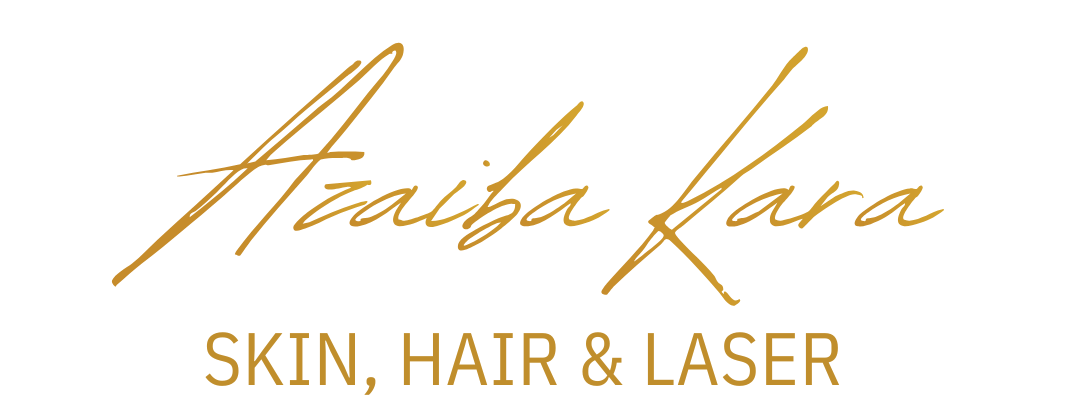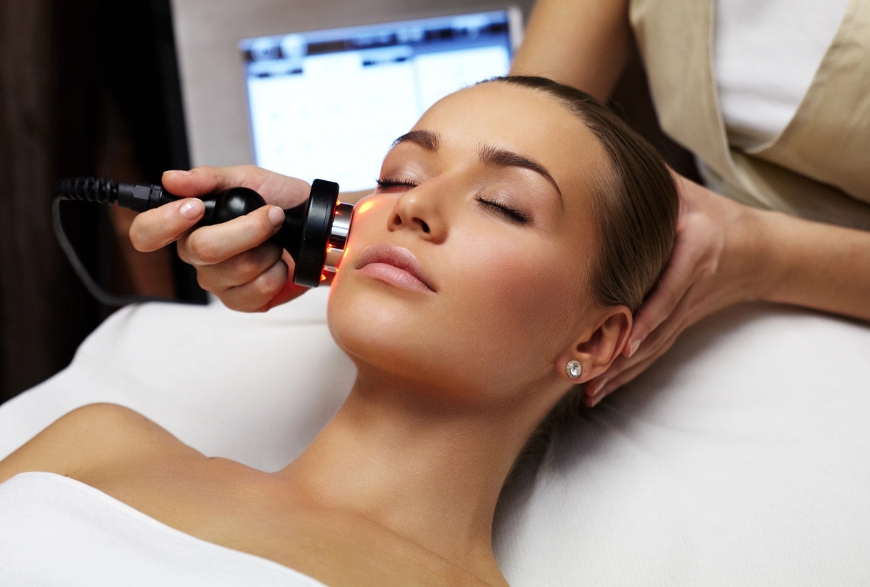Say goodbye to wrinkles, scars, and uneven skin tone with advanced laser skin rejuvenation. Azaiba Kara offers personalized treatments to address skin concerns and bring out natural radiance.
Are you tired of battling stubborn wrinkles, uneven skin tone, or scars that refuse to fade despite your best efforts? Do you find yourself spending endlessly on creams and treatments that overpromise but underdeliver? You’re not alone—and that’s where laser skin rejuvenation comes in.
Laser Skin Rejuvenation is an advanced, non-invasive solution designed to tackle the most frustrating skin concerns at their root, offering real, noticeable results. At Azaiba Kara’s clinic, we specialize in providing cutting-edge laser treatments that don’t just treat your skin but transform it—helping you reclaim your confidence and love the skin you’re in.
In this blog, we will discover how this revolutionary procedure works and why it could be the answer you’ve been searching for.
What is Laser Skin Rejuvenation?
Laser skin rejuvenation is a non-invasive cosmetic procedure designed to enhance the skin’s appearance by using concentrated beams of light. These lasers target specific layers of the skin to stimulate collagen production, address pigmentation, and improve overall skin tone and texture.
Historical Development of Laser Technology
The journey of laser technology began in the 1960s, with its application in dermatology gaining momentum in the 1980s. Since then, advancements in laser precision and safety have revolutionized skincare, making treatments like laser rejuvenation widely accessible and effective.
How Laser Skin Rejuvenation Works
Lasers emit concentrated light energy that penetrates the skin’s layers to target specific concerns, such as pigmentation, fine lines, or scars. This energy is absorbed by chromophores in the skin, converting into heat to stimulate collagen production and accelerate cellular renewal. Over time, this process results in smoother, firmer, and more even-toned skin, with visible improvements in texture and radiance.
Benefits of Laser Skin Rejuvenation
- Enhanced Skin Texture: Achieve a refined and smooth skin surface by addressing unevenness, rough patches, and enlarged pores.
- Reduction of Fine Lines and Wrinkles: Diminish visible signs of aging for a more youthful, rejuvenated appearance.
- Pigmentation Correction: Effectively treat sunspots, melasma, and hyperpigmentation for a brighter, more even complexion.
- Scar Improvement: Minimize the visibility of acne scars, surgical scars, and other imperfections, restoring confidence in your skin.
Types of Laser Treatments
Ablative vs. Non-Ablative Lasers
- Ablative Lasers: These lasers precisely remove the outer layers of the skin, triggering significant collagen remodeling and tissue regeneration. They are ideal for addressing deep wrinkles, scars, and severe pigmentation issues. While results are dramatic, recovery times can be longer due to the intensity of the treatment.
- Non-Ablative Lasers: These work beneath the skin’s surface, stimulating collagen production without damaging the outer layer. They are less invasive and better suited for addressing mild imperfections, improving skin texture, and maintaining results. Non-ablative lasers typically require multiple sessions for optimal outcomes but involve minimal downtime.
Fractional Lasers
Fractional lasers divide the laser energy into thousands of microscopic beams, treating only targeted areas while leaving surrounding skin intact. This dual action promotes controlled healing and faster recovery while delivering effective results. Fractional technology can be applied in both ablative and non-ablative modes, making it versatile for treating conditions like fine lines, acne scars, pigmentation, and overall skin rejuvenation. It strikes a balance between efficacy and recovery, making it a popular choice for comprehensive skin rejuvenation.
Additional Types of Laser Treatments
Pulsed-Dye Lasers (PDL)
- Purpose: These lasers are highly effective for treating vascular skin issues like rosacea, spider veins, and port-wine stains.
- Mechanism: PDL targets hemoglobin in blood vessels, using yellow light to minimize redness without damaging surrounding tissue.
- Downtime: Minimal, with slight redness or swelling post-treatment.
Nd:YAG Lasers
- Purpose: Ideal for deeper skin layers, Nd:YAG lasers address conditions like vascular lesions, pigmented lesions, and unwanted hair. They are also effective for dark skin types due to their deeper wavelength penetration.
- Mechanism: The laser energy is absorbed by deeper chromophores, making it suitable for concerns like veins and collagen stimulation.
- Downtime: Minimal, with occasional redness or swelling.
Erbium Lasers
- Purpose: These are often used for precision resurfacing to treat fine lines, mild scars, and pigmentation issues. They provide a gentler alternative to traditional ablative lasers.
- Mechanism: Erbium lasers vaporize damaged skin cells layer by layer with minimal thermal damage to surrounding tissues.
- Downtime: Recovery is faster compared to CO2 lasers, making it a popular choice for patients seeking less invasive resurfacing.
CO2 Lasers
- Purpose: Considered the gold standard for deep skin resurfacing, CO2 lasers treat wrinkles, deep scars, and severe sun damage.
- Mechanism: These ablative lasers use carbon dioxide to remove the skin’s top layer, stimulating extensive collagen production.
- Downtime: Recovery can take 1–2 weeks, but results are long-lasting and dramatic.
Alexandrite Lasers
- Purpose: Commonly used for hair removal, they are also effective for treating brown spots, hyperpigmentation, and sun-damaged skin.
- Mechanism: The laser emits a specific wavelength that targets melanin in pigmented areas.
- Downtime: Minimal, with mild redness or sensitivity.
Picosecond Lasers
- Purpose: These lasers are highly effective for pigmentation issues, tattoo removal, and skin revitalization.
- Mechanism: They deliver ultra-short pulses of energy to break down pigment and stimulate collagen production without significant heat damage.
- Downtime: Minimal, with faster recovery compared to traditional lasers.
Q-Switched Lasers
- Purpose: Primarily used for treating pigmentation, melasma, and tattoo removal.
- Mechanism: Q-switched lasers emit high-intensity pulses of energy that break down pigment into smaller particles, which are then cleared by the body.
- Downtime: Typically none, though slight redness may occur.
Choosing the Right Laser Treatment
The choice of laser depends on the patient’s skin type, specific concerns, and desired results. Each laser has unique benefits and limitations, and the expertise of the provider ensures the safest and most effective outcomes. A thorough consultation is essential to customize the treatment plan and address individual needs effectively.
Preparation for Laser Skin Rejuvenation
Initial Consultation
Your journey begins with a consultation, during which your dermatologist will assess your skin type, discuss your concerns, and determine the most suitable treatment plan.
Pre-Treatment Care
- Avoid sun exposure and tanning.
- Discontinue the use of certain skincare products as advised.
- Maintain hydrated and well-moisturized skin.
The Laser Skin Rejuvenation Procedure
Step-by-Step Guide
- Skin cleansing and preparation.
- Application of a numbing agent (if necessary).
- Laser treatment, which typically lasts 30-60 minutes.
Pain Management
Most patients report minimal discomfort, often described as a tingling or warm sensation.
Post-Treatment Care
Immediate Aftercare
- Apply soothing creams and sunscreen.
- Avoid direct sunlight for a few days.
Long-Term Maintenance
Follow a tailored skincare regimen to maintain results and protect your investment.
Potential Side Effects and Risks
While generally safe, some individuals may experience temporary redness, swelling, or dryness. Rare complications include infections or pigmentation changes, which are mitigated through expert care.
Who Can Benefit from Laser Skin Rejuvenation?
Ideal Candidates
This treatment is suitable for individuals seeking to address:
- Fine lines and wrinkles
- Pigmentation irregularities
- Mild to moderate acne scars
What to Expect During Recovery
Recovery Timeline
- Day 1-3: Initial redness and sensitivity.
- Week 1: Visible improvements begin.
- Week 2-4: Full results become apparent.
Cost of Laser Skin Rejuvenation
Factors Influencing Costs
- Type of laser used.
- Number of sessions required.
- Geographic location and clinic reputation.
FAQs About Laser Skin Rejuvenation
Can Laser Skin Rejuvenation Be Combined with Other Treatments?
Yes, it complements procedures like chemical peels.
Is Laser Skin Rejuvenation Safe for All Skin Types?
Most skin types can safely undergo treatment with the right laser and expertise.
How Many Sessions Are Needed for Noticeable Results?
Typically, 3-6 sessions spaced several weeks apart are recommended.
What Are the Alternatives to Laser Skin Rejuvenation?
Options include chemical peels, dermabrasion..
How Soon Can Results Be Seen After Treatment?
Some effects are immediate, while full benefits appear within a few weeks.
Is Laser Skin Rejuvenation Painful?
Most patients describe it as mildly uncomfortable rather than painful.
Conclusion
Laser skin rejuvenation is more than a treatment. It’s a step toward smoother, radiant, and youthful skin. This advanced procedure combines science and precision to target skin concerns at their core. At Azaiba Kara’s clinic, every treatment is tailored to your unique needs.
Schedule your consultation and discover the difference for yourself.
Comments ( 1 )
Comments are closed.


Augue interdum velit euismod in pellentesque massa placerat duis ultricies. Faucibus in ornare quam viverra. Enim facilisis gravida neque convallis. Lectus sit amet est placerat in egestas erat imperdiet.